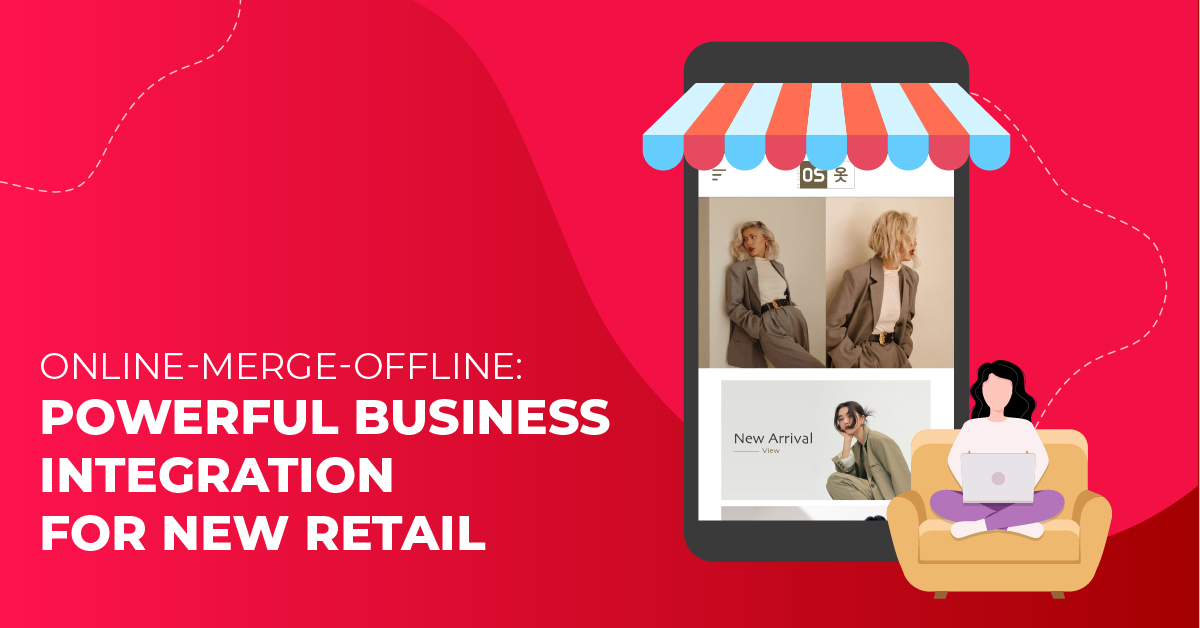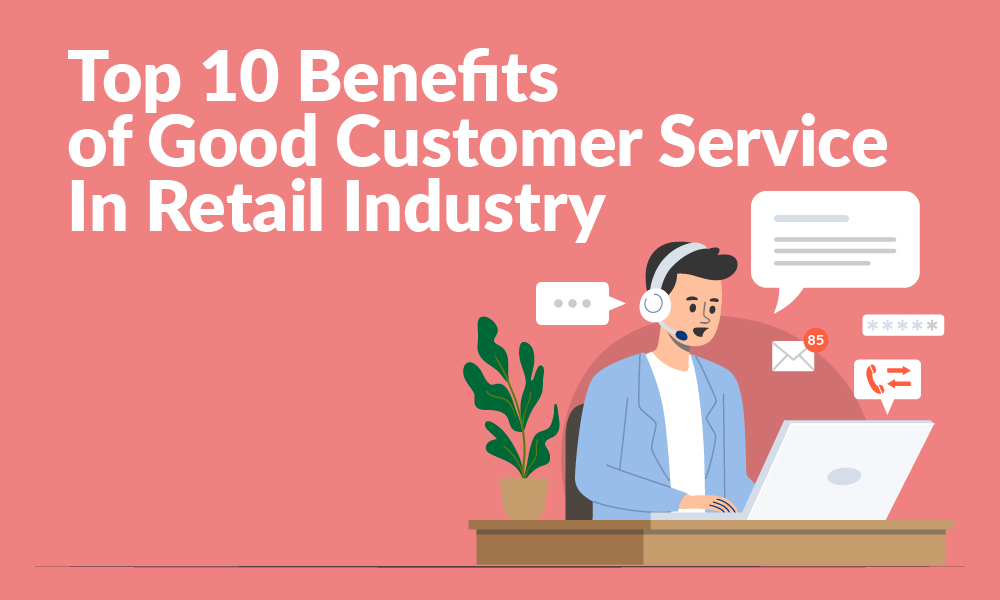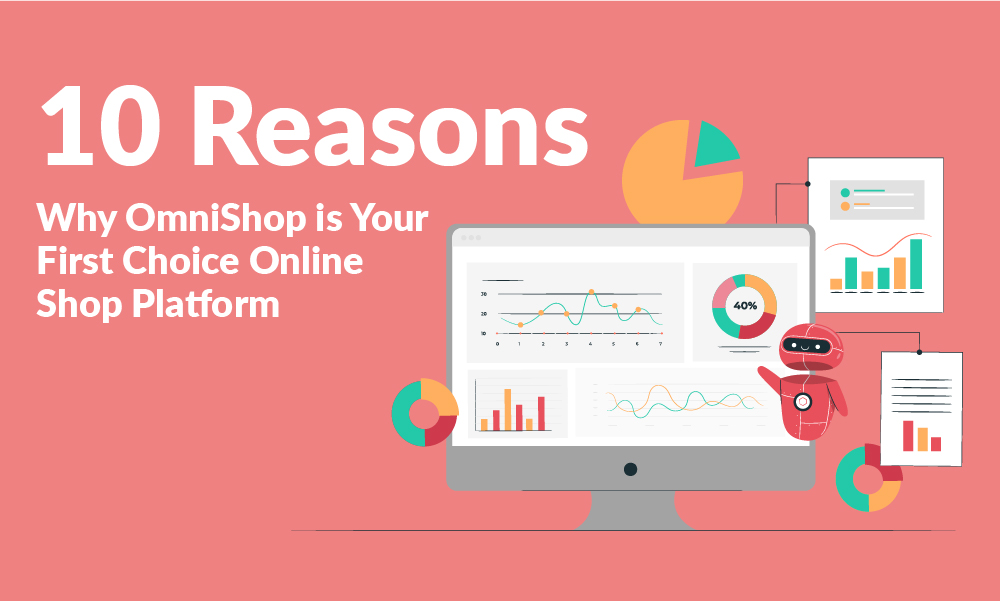Online-merge-offline execution is the first step to the omnichannel transformation of brick-and-mortar retail firms. Organizational transformation is a prerequisite for digital transformation across all sectors and types of firms.

The execution of online-merge-offline is only the first step to transforming brick-and-mortar retail firms into omnichannel. Crucial parts for implementation include business and marketing integration, among others.
System Integration
Any retail company that wants to undergo digital transformation should always start with system integration. App and online stores are given to have as customers interact with brands online as they expand their online presence. Registering as a member online should clearly indicate the physical store to earn points for shopping in person. When a customer signs up for in-person membership and shops online, the same integration should apply. Integration ensures consistent membership benefits for customers online and offline, avoiding channel conflicts.
Online-merge-offline (OMO) won’t take place right away, though, until the system is prepared. In actuality, there must be a certain amount of transactions carried out by users while using the system. The system won’t change the business in any manner if nobody utilises it. When the system and the organisation are prepared at the same time, online-merge-offline results will begin to become visible.
Established a Common Ground with your Store Manager
The opposition of your store manager will be an issue that needs to be addressed well. They will be uncomfortable when their interest is stolen from another platform although they are under the same umbrella. They don’t receive commissions from online sales since it’s not linked to their store’s performance-based commission system. The physical store’s performance can be affected if employees view the business’s app and online store as competition.
Your store manager will likely prevent any online-merge-offline promotion from taking place in the physical store if the commission structure remains unchanged. This will lower the efficiency of spreading awareness to customers. This issue can be resolved by allocating some of your online sales revenue to your physical stores. Their contribution and support are needed to maximize the exposure of the business’s online-merge-offline to customers. They can encourage customers to install the business’s app, shop online, and enjoy the convenience of picking up online purchases service. It will only be fair to distribute their share of commissions. With the help of F2F promotion, it will hasten OMO’s deployment.
Consistency between online and offline marketing efforts is necessary whenever brands launch their online operations (online stores and APPs). Customers will be upset if they found out that the promoted discount is not available either online or in physical stores. It will create confusion for customers and store employees.
Standardizing Online and Offline Marketing
All online clients should first be given substantial discounts when the brand’s marketing plan is expanded to promote its online store. However, after the initial phase, the offline and online marketing strategies need to be in sync. By doing this, unpleasant situations like a customer asking a store assistant, “why your business offers discounts exclusively to its online customers but not to its in-store customers?” would be avoided. If not, people would only purchase online, thus causing the profit of physical stores to suffer. Therefore, your physical store must provide the same discount.
In the long run, the marketing strategy must be designed regularly and coordinated between online and physical channels. However, operational flexibility is encouraged in the short term to boost online channel usability.
Business Integration
The top management plays a crucial role in supporting OMO implementation. They are the decision maker and role models for their employees which can dictate the success rate of OMO implementation. If a leader of the company is unconfident with the plan, this will deeply affect the morale of the employees. Since the leader is not taking high priority, there will be no reason for the employees to take extra effort on succeeding the plan.
Even if the top management decides to open up an Ecom department, there are no proper guidance given and clear objectives. This department in other words ‘just for show’.
Cooperation of Store Manager
Cooperation with the store manager can determine your business on achieving a tremendous user base. However, poor implementation of OMO will discourage the store manager as it seems that the sales from the physical store are declining due to customers switching online. It will be a problem when it comes to coordinating with the online channel.
Stock Distribution
It can be challenging when there is a high demand for a specific product. The business must ensure that stocks are allocated wisely especially when the business owns a few physical stores. Some businesses are biased towards their flagship stores and larger stores and disregarded smaller stores that generate lesser revenue.
Store managers from smaller stores will tend to be frustrated especially after the business app’s emerged in the market. A certain geographical location that has smaller stores will be forced to close down as customers can choose to shop online and deliver to their doorsteps while customers that do not shop online will shop at the competitor’s physical store.
To prevent these situations, Both channels must be merged and managed by one head of sales. The online and offline divisions must be a part of the same business unit, and equally responsible for both online and offline performance. Remember that online-merge-offline is not a battle between online and physical channels but rather about forming a harmonious relationship and working together towards the same goal.
Employers can set a “magic number” for online sales as a ratio of total sales to track the adoption of OMO (Online-Merge-Offline). Setting 5% for example is an excellent start. If this “magic number” is reached after a year, the OMO magic will start to unfold.
Marketing Integration
To increase sales performance, traditional marketing strategy typically only functions with offline channels. It might not work as well as anticipated when applied to online channels. To engage online effectively, businesses will need to implement digital marketing strategies. The growth of eCommerce in the digital age has led to new digital marketing channels replacing traditional media.
Traditional marketers may lack digital marketing expertise when promoting products or services on MarTech platforms such as Facebook, Google, WhatsApp, social media, and Chatbots. The typical marketing division of many businesses struggles with this unfamiliarity. And for this reason, “digital transformation” is crucial when it comes to putting OMO into practice.
What is MarTech?
Marketing Technology, refers to the software and technological tools used by marketers to plan, execute, and evaluate online marketing campaigns. These tools are used to collect and analyze data, automate marketing operations, effectively reach and engage with target audiences, and provide various other services.
These tools, which focus on marketing program efficiency, have become essential for effective marketing and have replaced other tools. The growth of digital marketing began with data. Key digital marketing metrics include Cost Per Click (CPC), Click-Through Rate (CTR), Conversion Rate (CVR), and Return on Ad Spending (ROAS). With the help of these data, it is possible to calculate and track every aspect of advertising and sales performance. Effective digital tools allow organizations to assess advertising costs, which is not possible with traditional marketing and media.
Brands can become fixated on sales performance due to the ease of accessing sales data. Brands may neglect the process in the end and focus only on the outcome. Focusing only on sales performance can lead brands to neglect customer needs and preferences. Brands that ignore customer demands won’t go far as customers spread their dissatisfaction through word of mouth.
MarTech is a Tool, Not a Shortcut
The fundamentals of branding and marketing do not alter despite the advancement of Martech tools. Building a devoted client base is required to create a great business. The brand must establish a close bond with its audience.
Both parties need to understand each other and develop trust along the way. A good first impression can lead customers to repeatedly interact with a business. These are vital procedures, and only time can forge a lasting connection.
eCommerce firms are increasingly concerned as social media advertising effectiveness declines. While brands with physical stores are not concerned about the impact of it.
Digital marketing primarily focuses on effective advertising, while traditional retail marketing focuses on brand advertising and customer relationship management. Conceptual and linguistic disparities between two groups can create a belief of incomprehension and lead to unhappy cooperation. This might have an impact on how well OMO can be implemented.
A combination of digital and traditional marketing can provide businesses with a competitive edge against their competitors. This will require trial and error and looking for fresh approaches to ensure the implementation of OMO can progress smoothly.
Final thoughts
For the successful adoption of OMO, an organization must integrate its systems, business, and marketing. Developing new systems and processes requires businesses to break through outdated practices and step out of their comfort zone.
Want to have a perfect OMO system solution for your business? Visit our website here.




